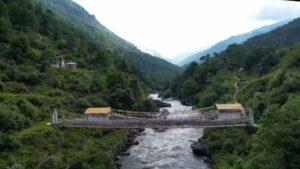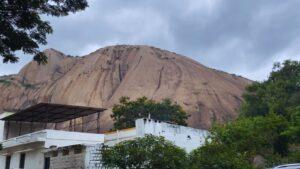Canada is a sought-after destination for U.S. citizens, whether it’s for tourism, work, study, or long-term residency. If you are a U.S. passport holder and planning to stay in Canada, it’s essential to understand the different requirements for visas, residency permits, and the process of renewing a Canadian passport from the U.S. Through the necessary steps to stay legally in Canada and how to manage your visa status or citizenship.
Visiting Canada as a USA Passport Holder
For U.S. passport holders, visiting Canada for short stays is quite straightforward. U.S. citizens do not need a visa for tourism or business visits of up to six months. However, to stay in Canada legally, travelers must:
- Have a valid USA passport
- Be in good health
- Show proof of sufficient funds to cover their stay
- Not have a criminal record or other grounds of inadmissibility under Canadian law
- Be prepared to prove that they will return to the U.S. after their stay
Required Documents for Entry
When entering Canada, U.S. citizens may need to present the following documents:
- A valid USA passport
- A return ticket (if traveling by air)
- Proof of sufficient financial support (bank statements, credit cards, etc.)
- Accommodation details and travel plans in Canada
Extending Your Stay in Canada
If your six-month visit is nearing its end, you can apply for an extension to remain in Canada longer. To extend your stay:
- Apply online with Immigration, Refugees and Citizenship Canada (IRCC).
- Provide a valid reason for the extension, such as tourism, family visits, or medical treatment.
- Pay the required application fee (around CAD 100).
- Await approval to continue staying in Canada legally.
If approved, you’ll receive a visitor record that includes the new expiration date for your stay.
Residency Options for U.S. Passport Holders in Canada
While U.S. citizens can stay in Canada for short periods without a visa, longer stays for work or study require additional documentation.
Temporary Resident Visa (TRV)
Although U.S. citizens don’t require a TRV for short visits, you’ll need one if you plan to work or study in Canada. A Temporary Resident Visa is necessary in these cases.
Work Permits
If you’re aiming to work in Canada, you must apply for a work permit. The main options include:
- Employer-Specific Work Permit: Requires a job offer from a Canadian employer.
- Open Work Permit: Allows working for any employer but is limited to specific programs such as the Post-Graduation Work Permit (PGWP) or spousal sponsorship programs.
Study Permits
If you wish to study in Canada for more than six months, you’ll need a study permit. Requirements include:
- An acceptance letter from a designated learning institution (DLI)
- Proof of financial ability to support yourself while studying
- A medical exam, if necessary
Permanent Residency (PR) in Canada
If you’re considering long-term residence in Canada, several pathways are available to obtain Permanent Residency (PR):
- Express Entry: A points-based system for skilled workers.
- Provincial Nominee Program (PNP): Allows provinces to nominate individuals for PR.
- Family Sponsorship: Family members in Canada (spouse, child, parent) may sponsor you.
- Business and Investment Programs: For entrepreneurs and investors.
Becoming a Canadian Citizen
Once you’ve lived in Canada as a Permanent Resident (PR) for at least three years within the last five years, you may apply for Canadian citizenship. Requirements include:
- Meeting the residency obligations
- Passing a citizenship test
- Demonstrating language proficiency (if applicable)
Renewing a Canadian Passport from the U.S.
If you’re a dual U.S.-Canada citizen, you may need to renew your Canadian passport while residing in the U.S. Here’s how:
- Gather Required Documents
- Completed passport application form (available online)
- Two recent passport photos (must meet Canadian specifications)
- Proof of Canadian citizenship (e.g., birth certificate, citizenship certificate)
- A government-issued ID (such as a driver’s license)
- Current Canadian passport (if applicable)
- Pay the Fees
- Regular processing (20 business days): Approximately CAD 190
- Expedited processing (10 business days): Additional fees apply
- Submit Your Application
- By mail: Send your completed application to the nearest Canadian embassy or consulate.
- In person: For expedited service, you may visit a consulate.
- Track Your Application
- You can track the status of your passport application online or contact the Passport Program for updates.
Staying in Canada with a USA passport is simple for short visits but requires more planning for long-term stays. Whether you’re visiting, working, studying, or considering permanent residency, understanding the process and immigration options is not easy to a smooth stay. If you’re a dual citizen, renewing your Canadian passport from the U.S. is a simple and clear process through the consulate.
FAQs
Do U.S. passport holders need a visa to visit Canada?
No, U.S. passport holders do not need a visa for short visits (up to six months) to Canada for tourism or business purposes.
How long can a U.S. passport holder stay in Canada?
U.S. citizens can stay in Canada for up to six months without a visa. For longer stays, you need to apply for an extension.
What documents do I need to enter Canada with a USA passport?
U.S. passport holders need a valid USA passport, proof of financial stability, accommodation details, and return travel plans.
Can I extend my stay in Canada with a USA passport?
Yes, you can apply for a stay extension through Immigration, Refugees, and Citizenship Canada (IRCC) before your initial six months expire.
Do I need a work permit to work in Canada with a USA passport?
Yes, if you plan to work in Canada, you must obtain a work permit. U.S. citizens may apply for an employer-specific or open work permit.
Can I study in Canada with a USA passport?
U.S. citizens can study in Canada for more than six months with a study permit, which requires an acceptance letter from a Canadian school.
How can I become a permanent resident of Canada with a USA passport?
U.S. citizens can apply for permanent residency through programs like Express Entry, Provincial Nominee Program (PNP), or family sponsorship.
How do I renew my Canadian passport while living in the U.S.?
To renew your Canadian passport, submit your application to the Canadian embassy or consulate in the U.S. with the required documents and fees.
Do U.S. citizens need a Temporary Resident Visa (TRV) for long stays in Canada?
U.S. citizens generally do not need a TRV for short stays, but a TRV is required if planning to work or study in Canada for an extended period.
Can I travel to Canada for medical treatment with a USA passport?
Yes, U.S. citizens can visit Canada for medical treatment, but you may need to provide documentation proving the need for medical services.







